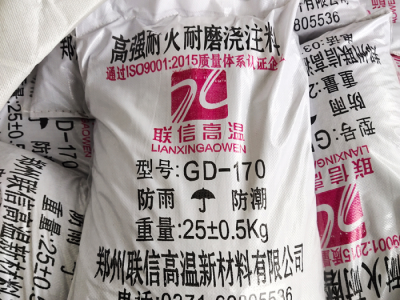With the rapid development of smelting technology and the steel industry, metallurgical refractory materials have also achieved a new technical transformation, getting rid of the high dependence on natural raw materials and original product groups, and gradually moving towards fine products based on artificial synthetic materials. Monolithic refractories are easy to mechanize and automate production and can be repaired to extend the service life. Compared with shaped refractory materials, they have obvious advantages and have gradually become an element in the production of the metallurgical industry. In developed industrial countries overseas, the utilization rate of monolithic refractories in the metallurgical industry is as high as 50%. At present, countries around the world are constantly deepening their research on the new generation of monolithic refractories, which has greatly promoted the sustainable development of the entire metallurgical industry.
Application of monolithic refractories on blast furnaces:
1. As important equipment in the metallurgical industry, traditional blast furnaces use steel plates as furnace shells and refractory brick linings are built inside the shells. High-aluminum cement and high-aluminum phosphate refractory castable prefabricated blocks are generally hoisted and laid. Modern blast furnaces are mainly built with resin-bonded aluminum-carbon unburned bricks. The water-cooled walls of large blast furnaces use SiC castables, and the bottom cushion and surrounding brick joints are filled with silicon nitride materials. The use of castable refractory materials for furnace walls has become a common feature of the industry and can achieve good results. For example, the Al₂O₃ material used on the No. 2 blast furnace of Fukuyama Steel Pipe Plant in Japan has not seen large-scale spalling for 6 consecutive years. At present, Al₂O₃-SiC-C (ASC) and mullite SiC-C are unshaped refractory materials commonly used on blast furnace tapping channels at home and abroad. Japanese blast furnaces mostly use “ASC” castables, Western industrial powers generally use SiC-C ramming materials, and our domestic metallurgical industry mainly uses SiC corundum.
2. Application of monolithic refractories on ladles:
Due to the increase in tapping temperature and the extension of the retention time of molten steel in the ladle, the shaped refractory materials originally used for ladles have gradually been replaced by amorphous refractory materials. Based on the amorphous characteristics of the ladle, production automation can be achieved, which helps to improve production capacity and production efficiency. Practical experience shows that the amorphous side wall of the ladle can save about 40% of maintenance hours; when the ladle is completely amorphous, the labor-saving effect can reach 70% or more. At present, many steel companies use Al₂O₃-spinel castables as refractory materials for their ladles. This material has good corrosion resistance, little structural impact at high temperatures, and can extend the service life of thermal equipment. However, its performance will still be affected by the tapping temperature and the residence time of molten steel. In order to solve this technical problem, the Al₂O₃-MgO castable, aluminum-magnesium-carbon refractory castable and magnesium refractory material developed by Japan have been born one after another. The strength and permeability resistance of these new materials have been greatly improved, and the use effect on the ladle is also better.
3. Application of monolithic refractories on heating furnaces:
The heating furnace is used to heat steel billets at high temperatures. Because the maximum temperature is as high as about 1400℃, its furnace roof and lining can be constructed with castables or plastics. Generally, the lining of a large walking-beam heating furnace can be made of plastic refractory materials, and the average service life can reach about 12 to 15 years. The walking-beam heating furnace in the high-speed wire workshop has a large furnace body and high refractoriness requirements. Clay structure castables can be used. This material is not only convenient for mechanical construction, but also has no honeycomb after demolding, has good fluidity, and can well meet the operating environment requirements of thermal equipment.
Monolithic refractories have special advantages that regular refractories do not have, and are an important support for the high-quality development of the modern metallurgical industry. Although there are still some defects, their overall development is on the rise. With the continuous advancement and improvement of technology, new unshaped refractory materials will surely promote the deepening development of the entire metallurgical industry through development and innovation.

